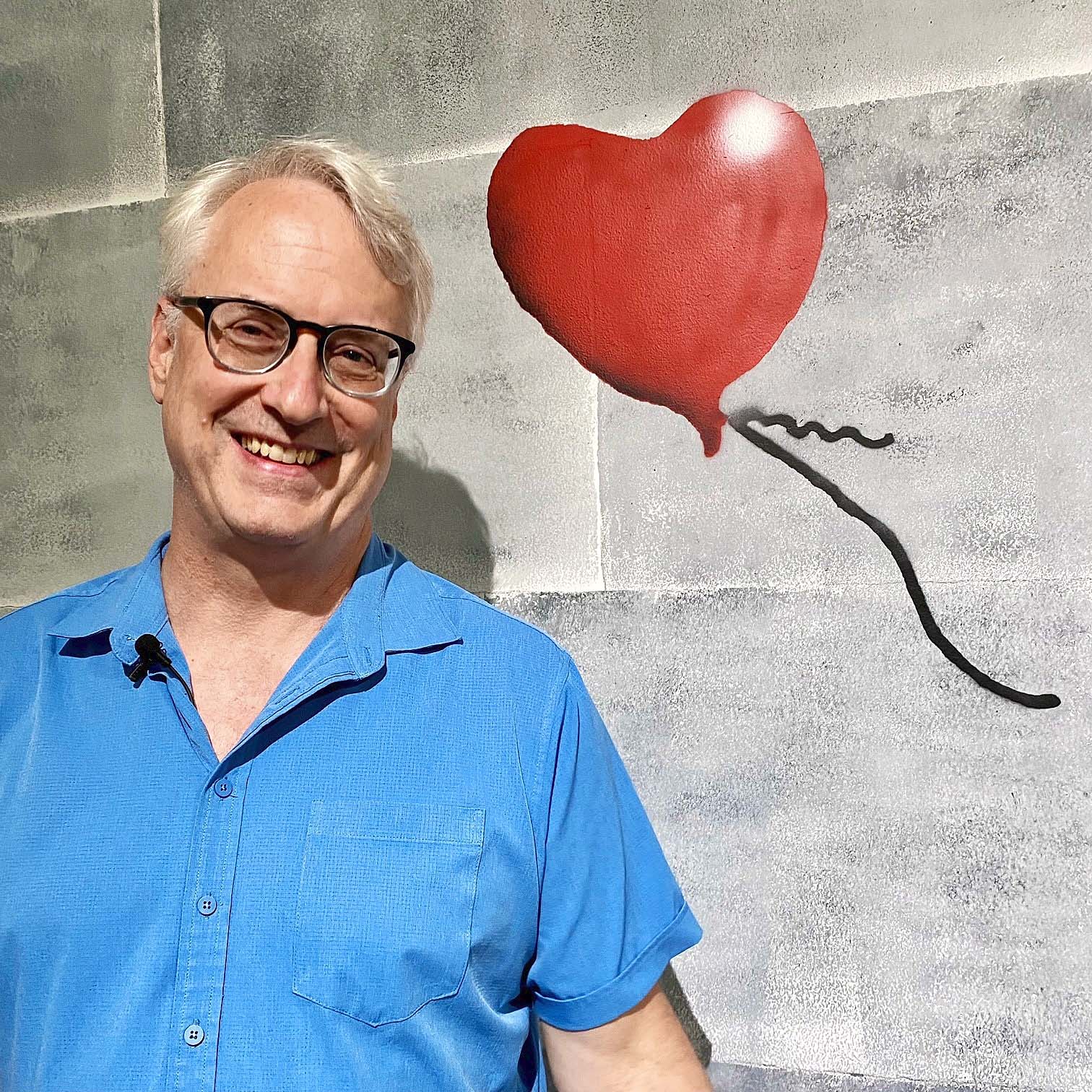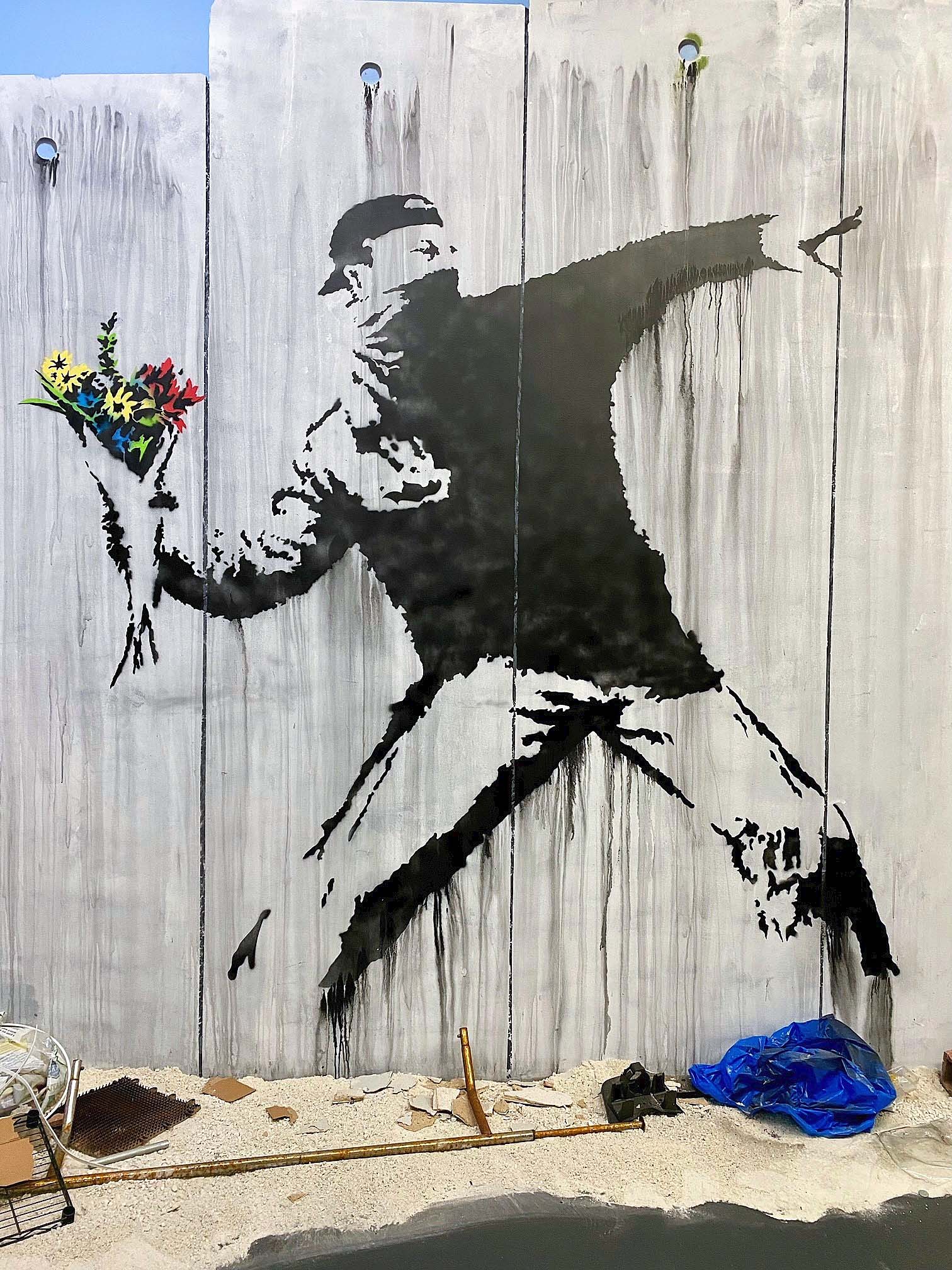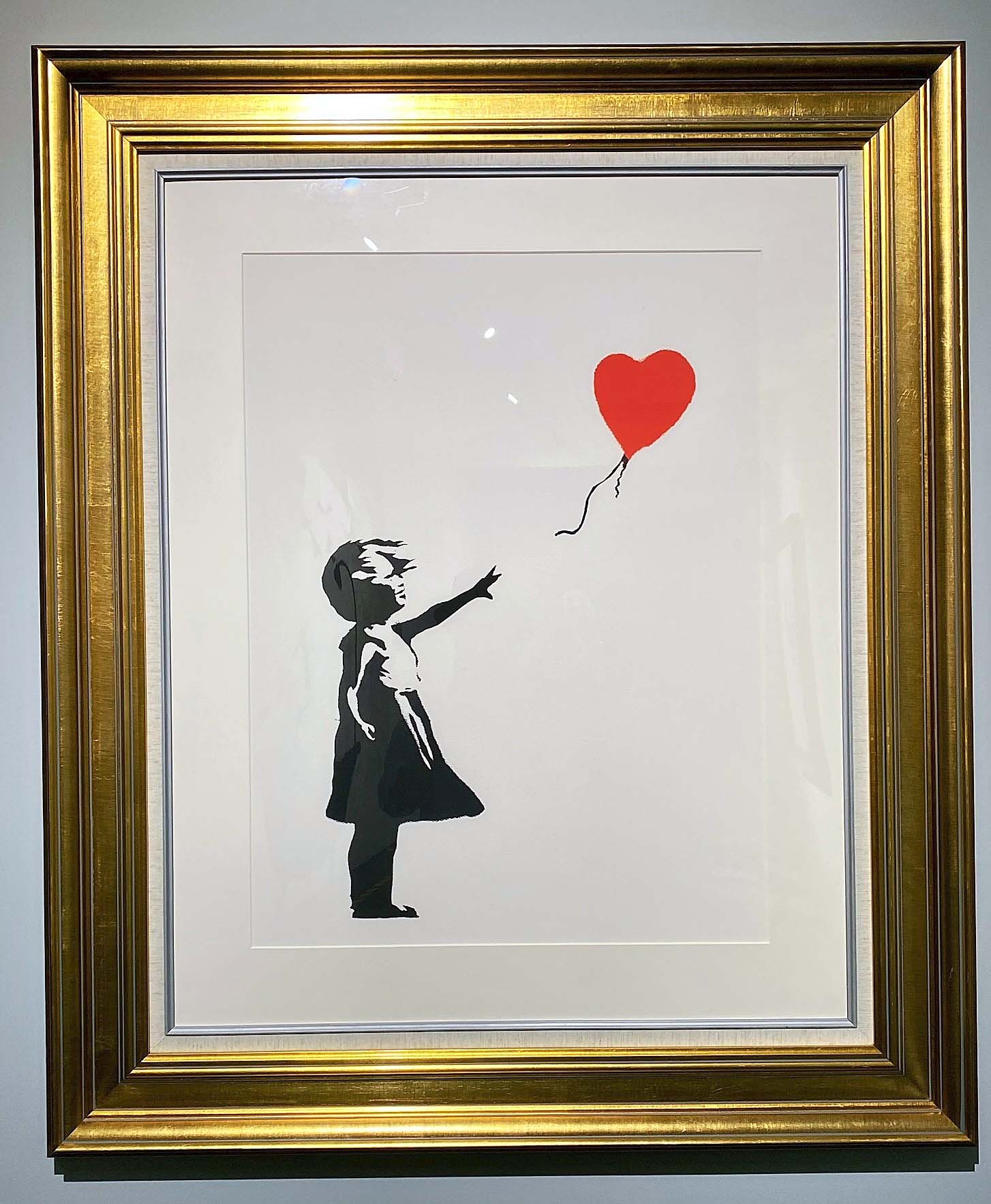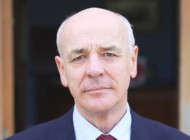
Like a Banksy painting, a new museum dedicated to the fanciful artist and his anti-establishment works has seemingly arisen overnight in New York City’s SoHo neighborhood, instantly becoming home to the world’s largest collection of Banksy’s life-sized murals and artwork. The New York Banksy Museum experience, an American premiere, follows successful exhibitions in Paris, Barcelona, Kraków and Brussels. With 160 works, the museum recreates art that Banksy has painted on surfaces in London, Bristol, Paris, Venice, Bethlehem, New York, Los Angeles and beyond. Leading this experience is William Meade, the museum’s executive director. Antiques and The Arts reached out to him to find out more about the visionary street art by the anonymous artist.
What was the impetus to launch an environmental experience, giving viewers access to Banksy creations, much of which has long since been whitewashed or dismantled?
1. Preservation of Art: Banksy’s works are often created in public spaces and are susceptible to damage, removal or alteration. An environmental experience allows these works to be preserved digitally, providing a way for people to continue appreciating them even if the original pieces no longer exist.
2. Accessibility: Banksy’s street art is spread across various locations worldwide, making it challenging for many fans to view the pieces in person. An environmental experience can bring these artworks together in one place, making them more accessible to a broader audience.
3. Cultural Impact: Banksy’s art often carries powerful social and political messages. By curating these works in a single experience, organizers can highlight these themes more effectively, encouraging viewers to engage with the underlying issues in a more concentrated manner.
4. Educational Value: Such an experience can serve as an educational tool, teaching viewers about street art, its significance and Banksy’s unique approach. It can provide context and background information that enhances the viewer’s understanding and appreciation of the artworks.
5. Technological Innovation: The use of modern technology to recreate and display Banksy’s work in an immersive way showcases the potential of digital media in the art world. It opens up new possibilities for how art can be experienced and interacted with.
In essence, the environmental experience serves to preserve, celebrate and disseminate Banksy’s influential works ensuring their messages and artistic value endure despite the ephemeral nature of street art.

“Rage, Flower Thrower,” 2003.
Banksy famously withholds his real name and identity, which has engendered much speculation. Do you believe there will come a time when the mask slips off and we are able to see the street artist and political activist?
I believe that in many ways it is better that we do not know his identity. It makes us experience the artwork directly rather than being told what is or isn’t important by anyone else. In other words, sometimes the personal history of the artist can get in the way of experiencing the art as the artist intended.
In order to capture some of the artist’s transgressive nature, in setting out to recreate the artworks and experience, you employed a team of anonymous street artists to recreate Banksy’s work. Will their identities someday be revealed?
There is an emotional and “spiritual” pact among street artists to stay true to the art and respect each other, so I don’t expect that we will ever know.
Do you believe that anonymity is a big part of the appeal of Banksy?
We can find out almost anything about a person if we try hard enough. I do think that we all miss some anonymity and not having our personal information being sliced and diced for marketing purposes.
Banksy’s “Girl with Balloon,” arguably the artist’s most famous and recognizable works, was created as part of a London series of street art works starting in 2002. Is it included in the museum experience?
It is, and I believe that one of the aspects that makes it great is that it is so simple but complex at the same time. The responses have been quite extraordinary.

“Girl with Balloon,” 2003.
What were the criteria in selecting which Banksy works to recreate?
That is a huge question. Clearly, we wanted to include his most famous works but we also wanted to expose audiences to a wide variety of his works that would showcase an artist that has been creating for 30 plus years.
Banksy has been said to disparage the very concept of museums, reportedly saying, “the only thing worth looking at in most museums of art is all the schoolgirls on day trips with the art departments.” Do you think he would visit your museum?
I would hope he would so that he could see the joy that he brings to so many people through his art.
“The Banksy effect” has been invoked by the art world whenever other street artists trade on Banksy’s overwhelming success. Do you believe the museum will heighten Banksy’s international image and stoke even more interest in his works?
Street art has for so long been considered “vandalism” by many people and so it is our hope that this museum will highlight the complex artistry of the these artists and finally give them some exposure to the general public.
Do you have a vulnerable wall at 277 Canal Street?
We do and we are planning on having some street artists create some works in front of live audiences.
—W.A. Demers




